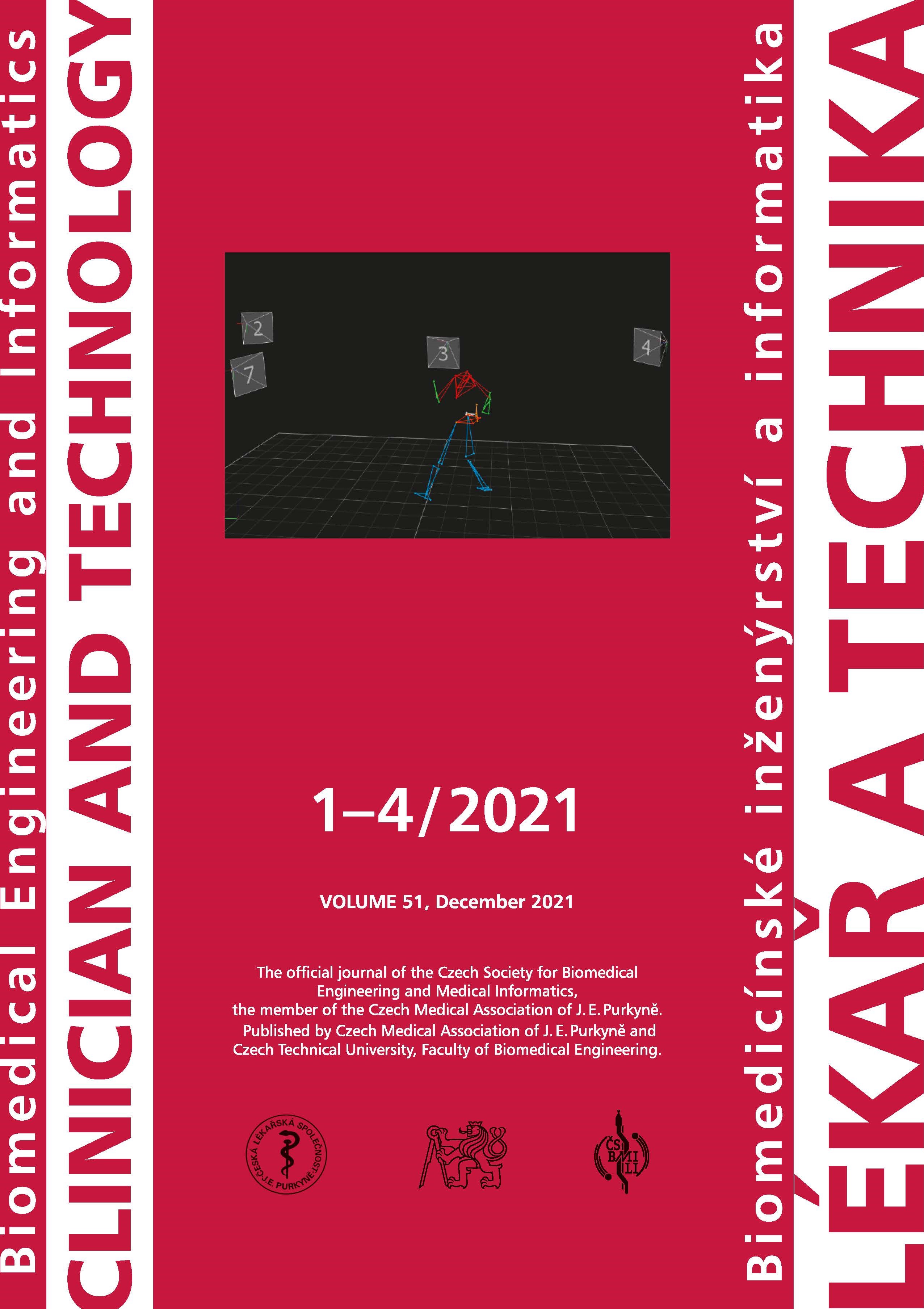SMA AS MEANS FOR SENSITIVE BIOMEDICAL SENSORS
DOI:
https://doi.org/10.14311/CTJ.2021.1.05Abstract
Shape memory alloys (SMA) are materials with specific electric, mechanic and thermal qualities originating in their microscopic structure and as such are used to design so-called Smart structures. In biomedicine, they are used mostly for their shape memory properties during intravasal surgery. The commonly used SMA material for biomedical purposes is Nitinol, a nickel-titanium alloy that exhibits, especially when annealed, among other properties also superelasticity and high resistivity with strain changes. This makes it suitable for usage in strain gauge sensors. In this work, NiTi annealed wires were used to create a strain gauge sensor, which exploits their unique properties. The properties of these sensors were then described using a climatic chamber, stretching device and a set of weights. Those properties were then compared to similar sensors, that are using different principles. The development, that followed, used these sensors in particular biomedical applications.
Downloads
Published
Issue
Section
License
Copyright (c) 2022 Vojtěch Lindauer, Barbora Váňová, Pavel Rydlo

This work is licensed under a Creative Commons Attribution 4.0 International License.
Authors who publish with this journal agree to the following terms:
- Authors retain copyright and grant the journal right of the first publication with the work simultaneously licensed under a Creative Commons Attribution License (https://creativecommons.org/licenses/by/4.0/) that allows others to share the work with an acknowledgment of the work's authorship and initial publication in CTJ.
- Authors are able to enter into separate, additional contractual arrangements for the non-exclusive distribution of the journal’s published version of the work (e.g., post it to an institutional repository or publish it in a book), with an acknowledgment of its initial publication in this journal.
- Authors are permitted and encouraged to post their work online (e.g., in institutional repositories or on their website or ResearchGate) prior to and during the submission process, as it can lead to productive exchanges.
CTJ requires that all of the content of the manuscript has been created by its respective authors or that permission to use a copyrighted material has been obtained by the authors before submitting the manuscript to CTJ. CTJ requires that authors have not used any copyrighted material illegally, as for example a picture from another journal or book, a photo, etc. It is the author’s responsibility to use only materials not violating the copyright law. When in doubt, CTJ may ask the authors to supply the pertinent permission or agreement about the use of a copyrighted material.
The opinions expressed in CTJ articles are those of authors and do not necessarily reflect the views of the publishers or the Czech Society for Biomedical Engineering and Medical Informatics.


